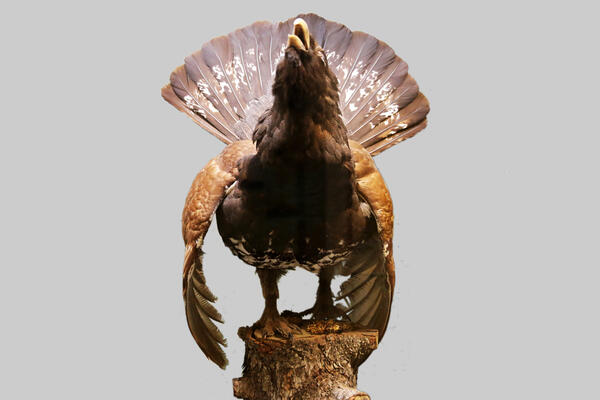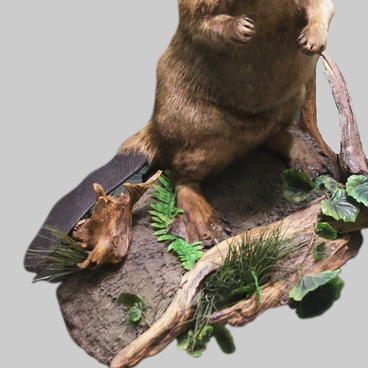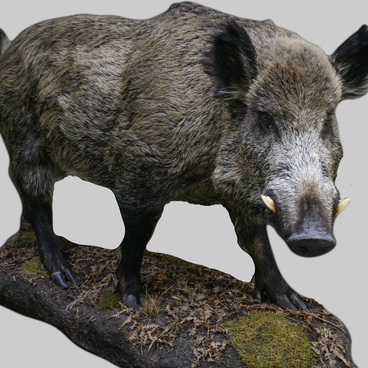The western capercaillie is the largest representative of forest game birds. During the breeding season, capercaillie males lose sensitivity and vigilance. Females rarely weigh more than two kilos, and their body length does not exceed 50 centimeters. Males are two to three times heavier than females and about twice their size. The largest recorded weight of a male capercaillie was 7.2 kilos. Western capercaillie gain the greatest weight in winter. Because they are so heavy, they are bad at flying. They do not rise above the treeline and prefer a sedentary lifestyle. The fastest flight speed a western capercaillie is capable of is 16 meters per second. Their wing-flapping rate is higher than their respiratory rate as they have five air sacs in addition to the lungs.
Capercaillie prefer to sleep on trees, with the exception of winter, when they spend the nights in the snow. This can be deadly, though. If a crust forms, the birds cannot always escape the snow.
The coloration of male capercaillie differs depending on their habitat. The birds in Central Europe are almost black, while Siberia is home to almost all-white birds. The mating calls of Western European capercaillie sound like a cork flying out of a bottle. At the same time, the Ural capercaillie produce standard sounds: double clicks that resemble a bouncing ping-pong ball. When a capercaillie sings, one of the bones in its skull blocks the auditory pathway, so the bird stops hearing. Males make mating calls only during the breeding season, while females are silent all year round. The human ear can pick up the sound of a mating song from up to 500 meters, and the infrasound travels up to 1 kilometer. Two to ten males gather at a lekking site. The spots closer to the center are occupied by the more ‘respected’ capercaillie. Lekking ends with the appearance of green foliage.
Capercaillie are herbivores. They prefer berries (especially lingonberries), seeds, herbs, leaves, and needles. To better digest their food, the birds swallow small stones, which can weigh up to a total of 30 grams. Capercaillie have many natural enemies: martens, foxes, wolves, lynxes, goshawks, golden eagle, and other predators.
Capercaillie prefer to sleep on trees, with the exception of winter, when they spend the nights in the snow. This can be deadly, though. If a crust forms, the birds cannot always escape the snow.
The coloration of male capercaillie differs depending on their habitat. The birds in Central Europe are almost black, while Siberia is home to almost all-white birds. The mating calls of Western European capercaillie sound like a cork flying out of a bottle. At the same time, the Ural capercaillie produce standard sounds: double clicks that resemble a bouncing ping-pong ball. When a capercaillie sings, one of the bones in its skull blocks the auditory pathway, so the bird stops hearing. Males make mating calls only during the breeding season, while females are silent all year round. The human ear can pick up the sound of a mating song from up to 500 meters, and the infrasound travels up to 1 kilometer. Two to ten males gather at a lekking site. The spots closer to the center are occupied by the more ‘respected’ capercaillie. Lekking ends with the appearance of green foliage.
Capercaillie are herbivores. They prefer berries (especially lingonberries), seeds, herbs, leaves, and needles. To better digest their food, the birds swallow small stones, which can weigh up to a total of 30 grams. Capercaillie have many natural enemies: martens, foxes, wolves, lynxes, goshawks, golden eagle, and other predators.




